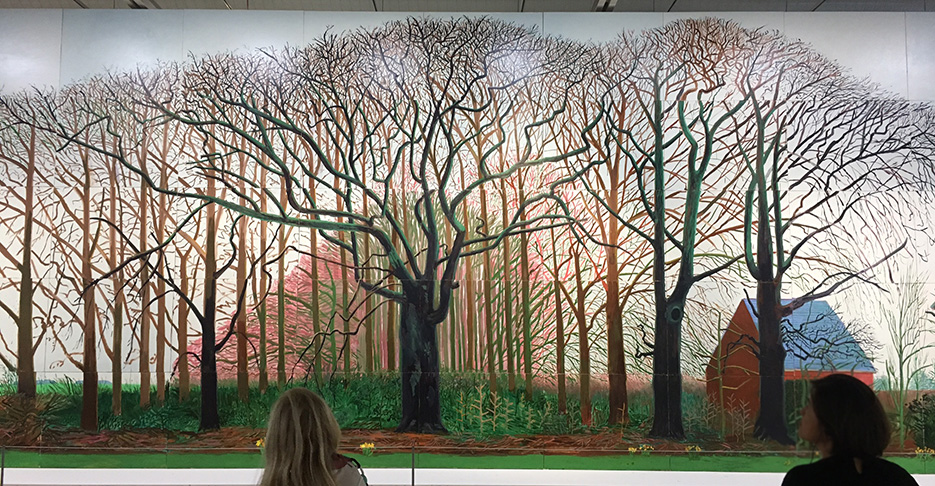David Hockney,a great exhibition at the
Centre Pompidou.
Ever since the 1950s, David Hockney has been producing work joyful, inventive and exploratory.
Embracing the legacy of the founders of modern painting, he has taken from Matisse the use of intense and expressive colour and the goal of making each painting a celebration of the joy of life, and from Picasso his stylistic freedom and his invention of a way of seeing-Cubism-capable of taking account of the movement and the passage of the time inherent in perception. Hockney has constantly shown that a cultivated eye and practised hand are still the best way of achieving a properly ample representation of the world. To the supposed obsolescence of painting in the age of technology, he has counterd images drawing on photography, the fax machine, the photocopier, the moving image, the graphics tablet.
The sixty years of artistic activity represented in this retrospective show that the paintings of a hedonistic California for which he became famous have acted to obscure the complexity of a body of work that today can only be seen as an erudite and complex inquiry into the nature and status of images and the laws that govern their conception and perception.
-Until October 23, 2017
 |
| Pool and Steps, Le Nid du Duc, 1971 |
 |
| Christopher Isherwood and Don Bachardy, 1968 |
 |
| Mr. and Mrs. Clark and Percy, 1970-71 |
 |
| Self-Portrait, 1954 |
 |
| The Cha Cha That Was Danced in the Early Hours of 24th March 1961, 1961 |
 |
Man in a Museum
(or You're in the Wrong Movie), 1962 |
 |
| Arizona, 1964 |
 |
| Rocky Mountains And Tired Indians, 1965 |
 |
The First Marriage
(A Marriage of StylesI), 1963 |
 |
| The Hypnotist, 1963 |
 |
| Play Within a Play, 1963 |
 |
| Savings and Loan Building, 1967 |
 |
Billy + Audrey Wilder, Los Angeles, April 1982
(Polaroid composite) |
 |
| Pearblossom Hwy., 11-18th April 1986, n°1, 1986 |
 |
| Outpost Drive, Hollywood, 1980 |
 |
| Canyon Painting, 1978 |
 |
The Four Season
(moving image) early 1980's |
The Four Season consisting of multiscreen recordings on 18 high-definition micro-cameras. From the Middle Ages to the Renaissance, the theme of the four season was associated with meditation on the order of the cosmos and on the passage of time. The Four Season are a meditation on time lost and found again.
























No comments:
Post a Comment